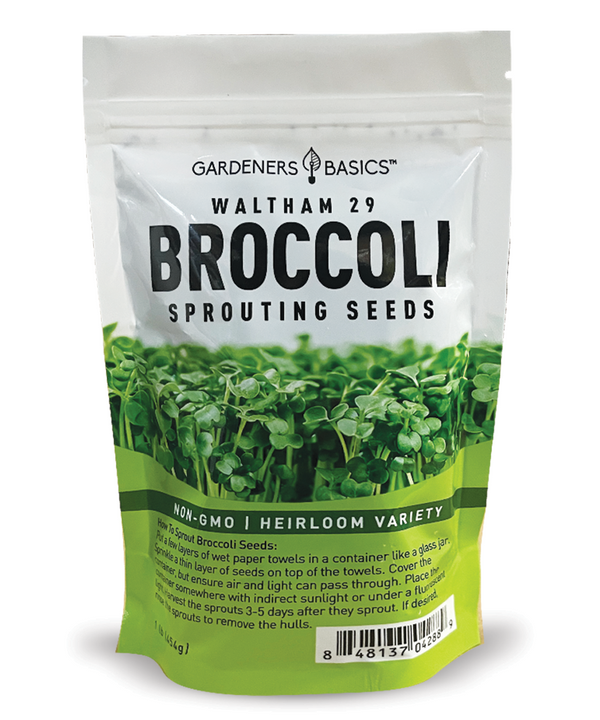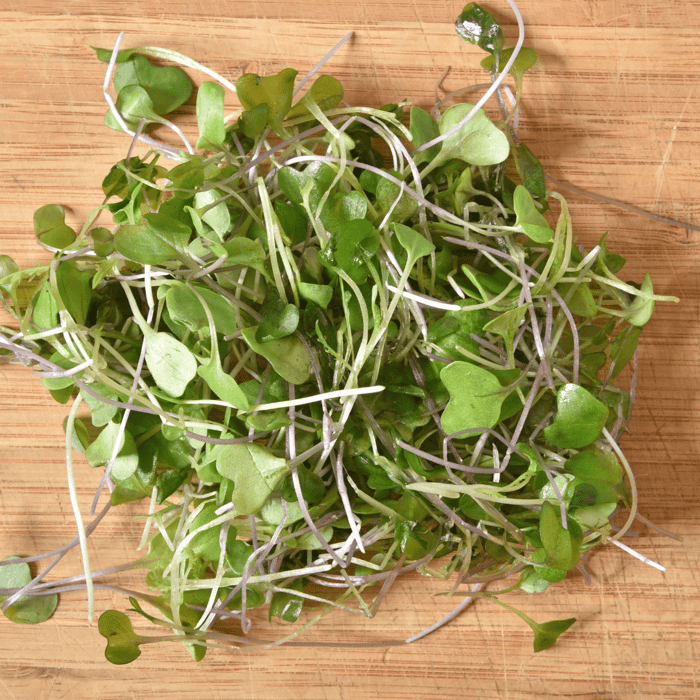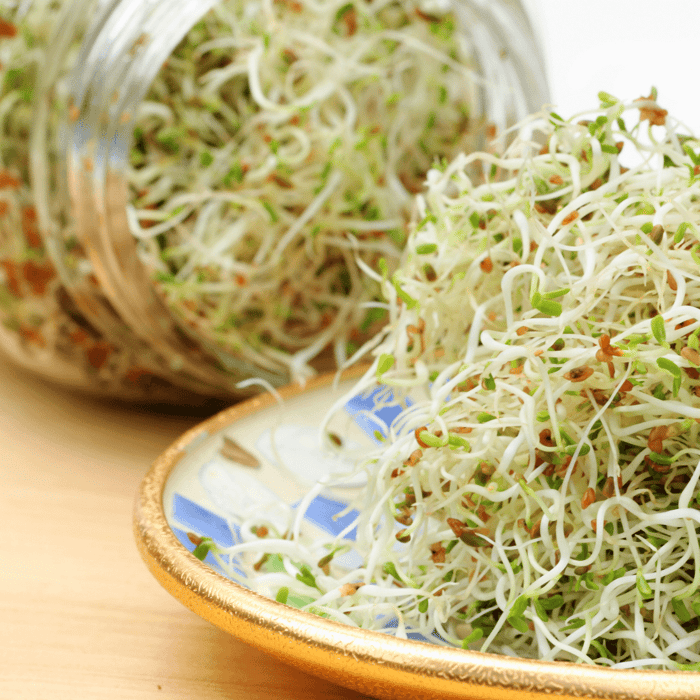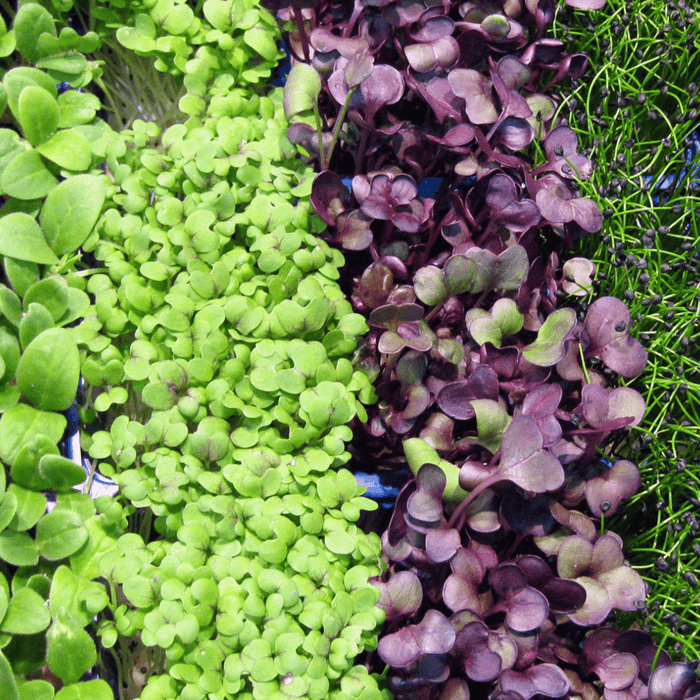Microgreens and sprouts are two popular types of young plants that are often used in salads, sandwiches, and other dishes. While they may look similar, there are some key differences between the two that can impact their taste, texture, and nutritional value. In this article, we will explore microgreens vs sprouts, their growing methods, and the nutritional benefits of each.
What are Microgreens?
Microgreens are young plants that are harvested just after the emergence of their first set of true leaves. These plants are grown from a variety of seeds such as broccoli, radish, and sunflower. They are typically grown in soil or a growing medium and require sunlight, water, and nutrients to grow.
What are Sprouts?
Sprouts, on the other hand, are germinated seeds that are typically grown without soil. The seeds require only water and air to sprout and are usually grown using the paper towel method. The most common sprouts are bean sprouts and alfalfa sprouts, although other seeds can also be used.
Growing Method
The growing method for microgreens and sprouts is quite different. Microgreens are grown in soil or a growing medium, while sprouts are typically grown using the paper towel method or in a sprouting jar. Here are some key differences between the two methods:
Microgreen Growing Method:
- Start by selecting a growing medium, such as soil or coconut coir.
- Add seeds to the growing medium and water thoroughly.
- Place the tray in a sunny location or under grow lights.
- Water regularly and wait for the seeds to germinate.
- Harvest the microgreens once they have reached the desired size.
Waltham 29 Broccoli Sprouting Seeds - 1 Pound

$14.95
$19.95
Waltham 29 Broccoli Sprouting Seeds for Nutrient-Packed Microgreens - Heirloom, Non-GMO, Open-Pollinated, Non-Hybrid Discover the joy of growing your own Waltham 29 Broccoli Sprouts, a powerhouse of flavor and nutrition. These heirloom, non-GMO, non-hybrid, and open-pollinated seeds are perfect for… read more
Sprouting Growing Method:
- Rinse the sprouting seed and place it in a jar or bowl.
- Cover the seed with water and let it soak for several hours.
- Drain the water and rinse the seed thoroughly.
- Place the seed in a sprouting jar or on a paper towel.
- Rinse the seed regularly and wait for it to sprout.
- Harvest the sprouts once they have reached the desired size.
Nutritional Value
Both microgreens and sprouts are packed with nutrients and vitamins, but there are some differences between the two.
Nutrients and Vitamins in Microgreens
- Microgreens contain more nutrients than their mature counterparts.
- Nutrients are stored in the leaves and stems of the plant.
- They contain high levels of antioxidants, vitamins C and E, and beta-carotene.
- Microgreens are a good source of protein, fiber, and minerals.
Nutrients and Vitamins in Sprouts
- Sprouts are low in calories and high in fiber.
- They contain high levels of vitamin C, vitamin K, and folic acid.
- Sprouts are a good source of protein, but they do not contain as many nutrients as microgreens.
Taste and Texture
Microgreens and sprouts have different tastes and textures, which can impact their use in cooking.
Taste and Texture of Microgreens
- Microgreens have a more complex flavor than sprouts.
- They have a tender texture and can be slightly crunchy.
- Microgreens are often used as a garnish or added to salads.
Taste and Texture of Sprouts
- Sprouts have a mild, nutty flavor.
- They have a crunchy texture and can be slightly chewy.
- Sprouts are often used in sandwiches and wraps.
Harvesting Microgreens and Sprouts
Microgreens and sprouts require different harvesting methods.
Harvesting Microgreens
- Use scissors to cut the microgreens just above the soil level.
- Rinse the microgreens thoroughly and let them dry.
Harvesting Sprouts
- Drain the sprouts thoroughly and remove any seed husks.
- Rinse the sprouts with cold water and let them dry.
- Store the sprouts in a container in the refrigerator for up to a week.
Benefits of Growing Microgreens and Sprouts
Growing microgreens and sprouts at home can provide a range of benefits. Let's explore microgreens vs sprouts further.
Benefits of Growing Microgreens
- Microgreens are easy to grow and can be grown year-round.
- They are a good source of nutrients and vitamins.
- Growing microgreens can be a fun and rewarding hobby.
- They can be used in a variety of dishes to add flavor and nutrition.
Benefits of Growing Sprouts
- Sprouts are easy to grow and require minimal equipment.
- They are a low-cost source of nutrition.
- Growing sprouts can be a fun and educational activity for children.
- They can be used in a variety of dishes to add texture and nutrition.
Conclusion
In conclusion, both microgreens and sprouts are nutrient-dense foods that can provide a range of health benefits. While they may look similar, they have different growing methods, tastes, textures, and nutritional values. Microgreens are grown in soil or a growing medium and are harvested just after the emergence of their first set of true leaves, while sprouts are germinated seeds that are typically grown without soil. Regardless of which one you choose to grow, both microgreens and sprouts can be a great addition to your diet and a fun hobby to explore. When thinking about microgreens vs sprouts, which one do you choose now? We like to grow both, but honestly it just depends on which style we like to do at the moment.
Microgreens and Sprouts FAQ
Q: What are microgreens?
A: Microgreens are young plants that are harvested just after the emergence of their first set of true leaves. They are typically grown in soil or a growing medium and require sunlight, water, and nutrients to grow.
Q: What are sprouts?
A: Sprouts are germinated seeds that are typically grown without soil. The seeds require only water and air to sprout and are usually grown using the paper towel method or in a sprouting jar.
Q: What are some common types of microgreen seeds?
A: Some common types of microgreen seeds include broccoli, radish, sunflower, pea, and wheatgrass.
Q: What are some common types of sprouting seeds?
A: Some common types of sprouting seeds include alfalfa, bean, broccoli, and radish.
Q: What is the nutritional value of microgreens?
A: Microgreens contain more nutrients than their mature counterparts. They are a good source of antioxidants, vitamins C and E, and beta-carotene. They are also a good source of protein, fiber, and minerals.
Q: What is the nutritional value of sprouts?
A: Sprouts are low in calories and high in fiber. They contain high levels of vitamin C, vitamin K, and folic acid. They are also a good source of protein, but they do not contain as many nutrients as microgreens.
Q: How do I grow microgreens?
A: To grow microgreens, start by selecting a growing medium, such as soil or coconut coir. Add seeds to the growing medium and water thoroughly. Place the tray in a sunny location or under grow lights. Water regularly and wait for the seeds to germinate. Harvest the microgreens once they have reached the desired size.
Q: How do I grow sprouts?
A: To grow sprouts, rinse the sprouting seed and place it in a jar or bowl. Cover the seed with water and let it soak for several hours. Drain the water and rinse the seed thoroughly. Place the seed in a sprouting jar or on a paper towel. Rinse the seed regularly and wait for it to sprout. Harvest the sprouts once they have reached the desired size.
Q: How do I harvest microgreens?
A: To harvest microgreens, use scissors to cut the microgreens just above the soil level. Rinse the microgreens thoroughly and let them dry.
Q: How do I harvest sprouts?
A: To harvest sprouts, drain the sprouts thoroughly and remove any seed husks. Rinse the sprouts with cold water and let them dry. Store the sprouts in a container in the refrigerator for up to a week.
Q: How can I use microgreens and sprouts in my cooking?
A: Microgreens can be used as a garnish or added to salads. Sprouts are often used in sandwiches and wraps. Both microgreens and sprouts can be used in a variety of dishes to add flavor, texture, and nutrition.
Waltham 29 Broccoli Sprouting Seeds - 1 Pound

$14.95
$19.95
Waltham 29 Broccoli Sprouting Seeds for Nutrient-Packed Microgreens - Heirloom, Non-GMO, Open-Pollinated, Non-Hybrid Discover the joy of growing your own Waltham 29 Broccoli Sprouts, a powerhouse of flavor and nutrition. These heirloom, non-GMO, non-hybrid, and open-pollinated seeds are perfect for… read more







